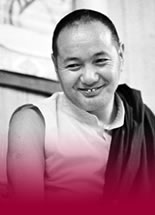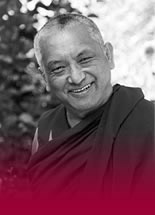Robina’s Blog
9 May, 2024
Mindfulness plays a role in practice, but it’s not enough. Let's say, for instance, you have really good concentration, and you've been looking at a garden – you've been practicing mindfulness of a garden, if you like. You could have this garden so accurate in your mind you could replicate the entire garden in a drawing, every tiny piece. You’ve got really good concentration, and you can see all the bits of the garden, but what good is that? What good is that unless you can identify what you're seeing? What good is that if you can’t tell the difference between a flower and a weed?
Concentration meditation – what mindfulness practice actually is – is utterly necessary: we need to practice simply focusing, not engaging in the thoughts. As Lama Yeshe says in his book, Mahamudra, even if it’s a good thought, we’ve got to refrain from being involved in them. There's a crucial reason for that: to get the mind to a more subtle level, beyond conceptuality.
But we shouldn’t overexaggerate the job of mindfulness and think that's what we’re supposed to do all the time, no matter what is arising: “Oh well, there’s rage. There’s thoughts of murder. There’s a desire for sexual violence. Just watch it.” That's nihilism.
Because if our job, eventually, is to rid the mind of delusions and develop to perfection the virtues, then it's obvious we have to distinguish between them.
Buddha divides all the states of the mind into the negative ones, which are the delusions; and the positive ones, which are the virtues; and the neutral ones, which I like to call the mechanics of the mind.
One of these mechanics of the mind is called discrimination. It's one that’s there in the mind every single second. It’s so important for the Buddha that when he sorted the contents of a person into five components – the five aggregates – he plucked out from the different mental factors the one called discrimination or discernment because of its central role in our suffering.
Every millisecond of the day it's functioning to distinguish between this and that – shapes and colors and things and sounds. If you didn’t have this discrimination, you'd be mentally ill. You wouldn’t be able to discern anything; you wouldn’t be able to function.
Discrimination is an absolutely crucial state of mind for a practitioner: to distinguish between a virtue and a non-virtue: this is the job of being a Buddhist, millisecond by millisecond by millisecond. It's actually a super-advanced job.
And how can you decide whether a thought is virtuous or nonvirtuous? The same way as you decide whether what’s in the garden is a weed or a herb: you learn the theories, you learn botany. Here you learn Buddha’s model of the mind.
If you cannot distinguish in your mind between love and attachment, for example, then how can you change? How can you recognize the attachment, which is what’s causing your suffering? How can you mold your mind into the shape of a virtuous, kind person? You can't. You have to know the difference by learning the Buddhist theories about the mind.
You learn about the neurotic, exaggerated, distorted, fear-based states of mind and the positive states of mind that are reasonable, valid, interconnected.
Once we’re off our cushion and we’re engaging in daily life, we use the skill we’ve developed in our practice to pay attention to what’s going on in our mind. Then with our discrimination we’re able to identify the attachment, the anger, and the rest. And then – this is finally the point – we decide what to do with it: we use our wisdom and other virtues to argue with the delusions, gradually reconfiguring all these stories in our mind.
In other words, we need to imbue our mindfulness with intelligence.
It’s a process. We say, “Practice makes perfect,” but Tibetans have a lovely way of putting it. They say, “Nothing ever gets more difficult with practice.”

